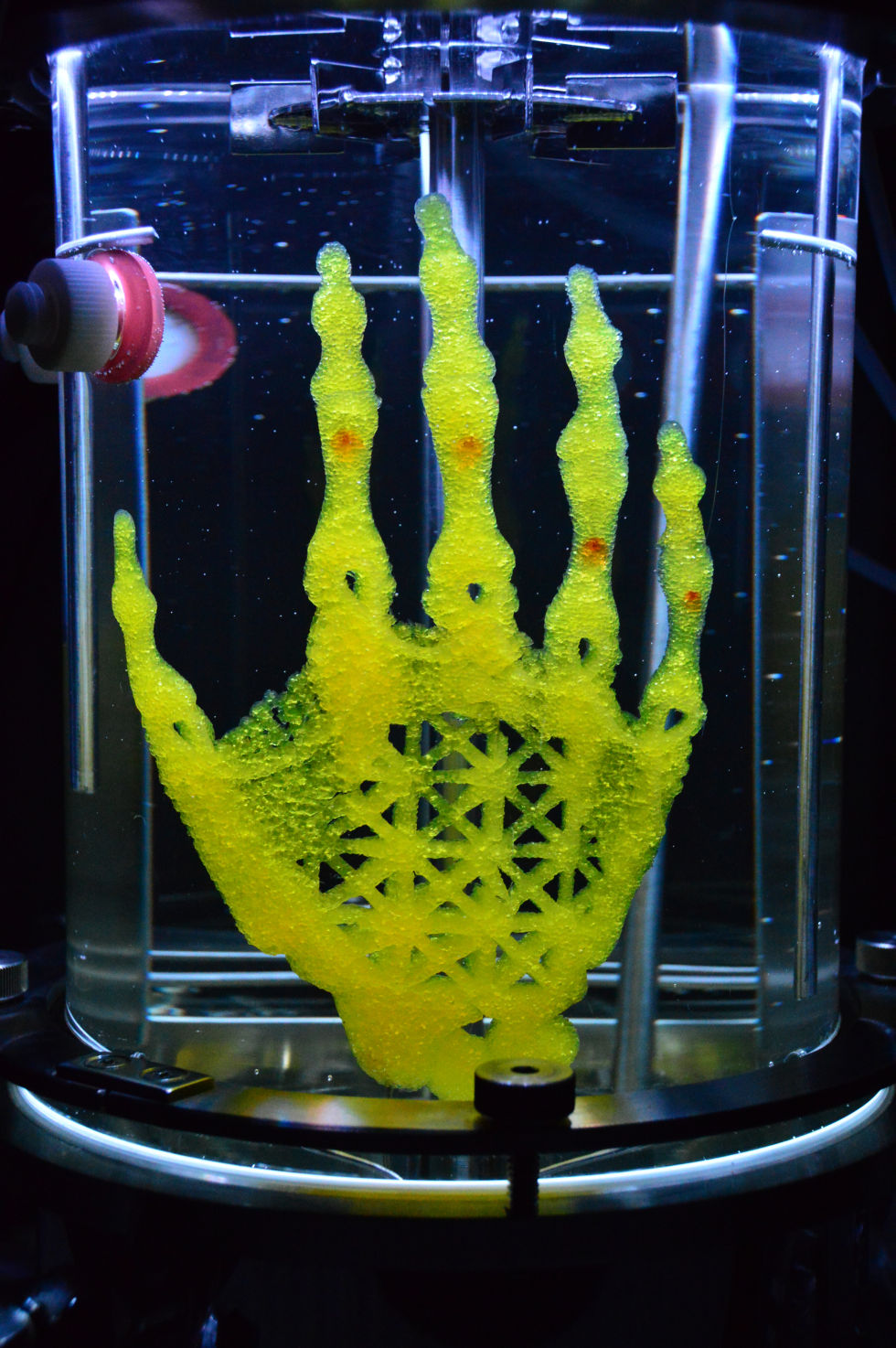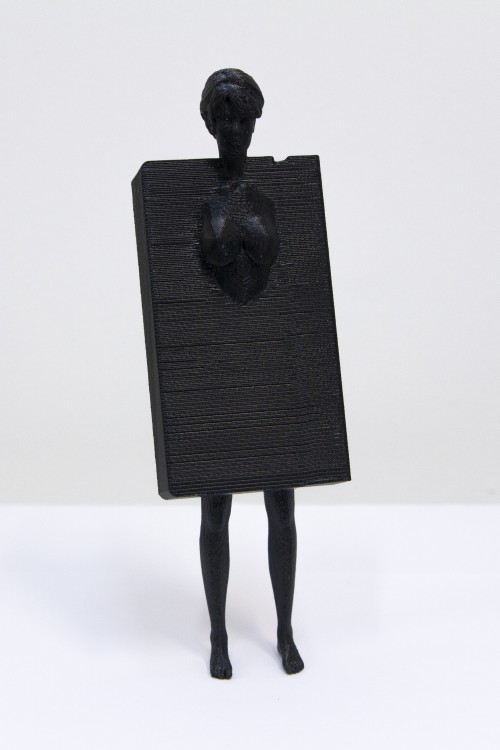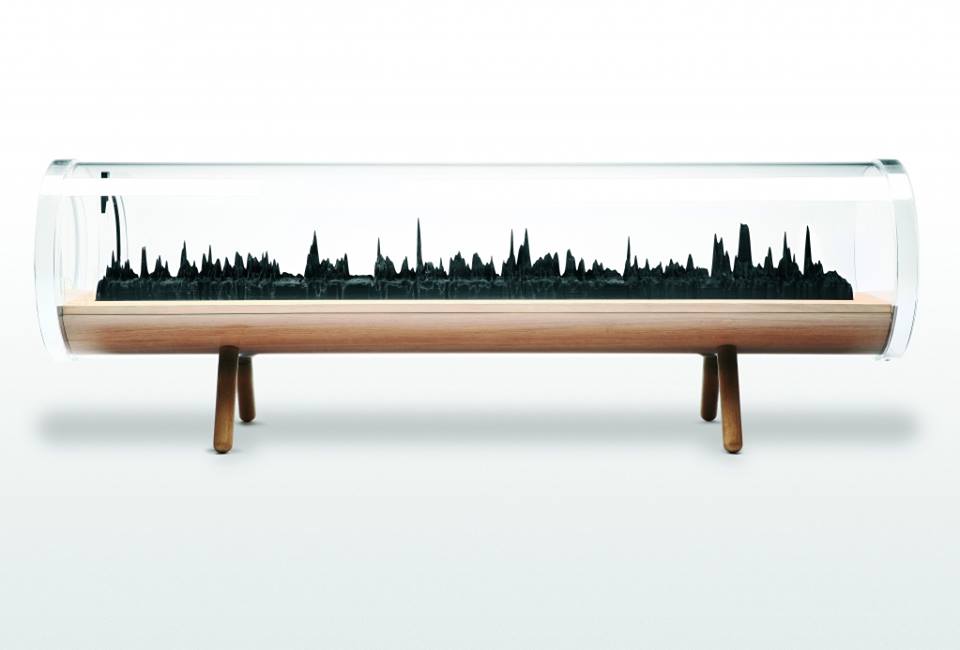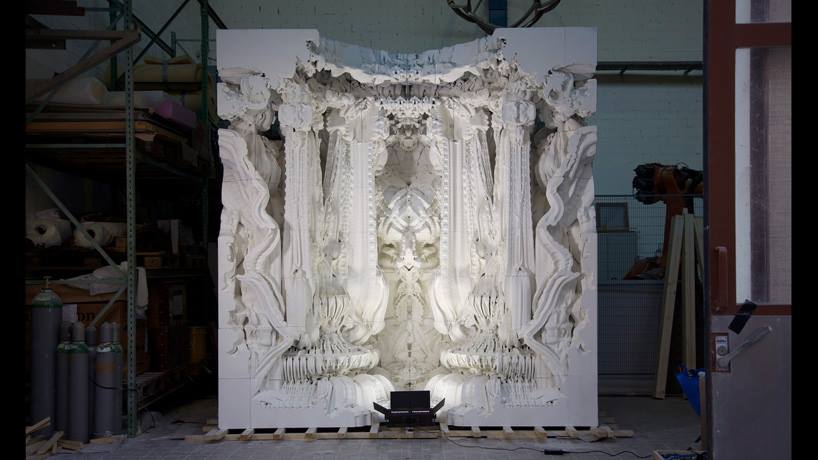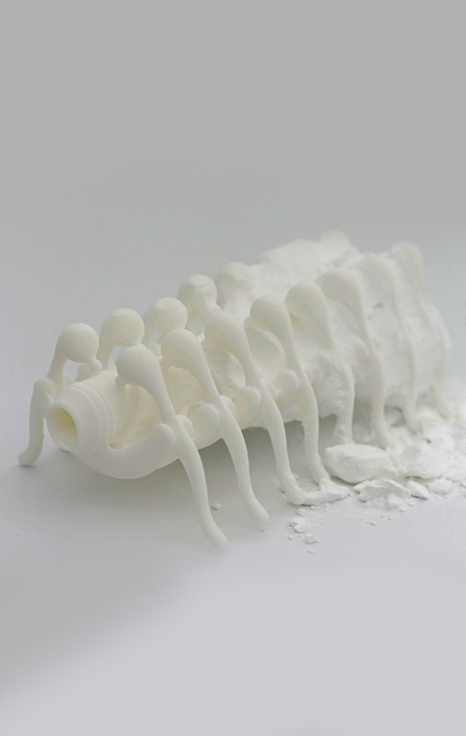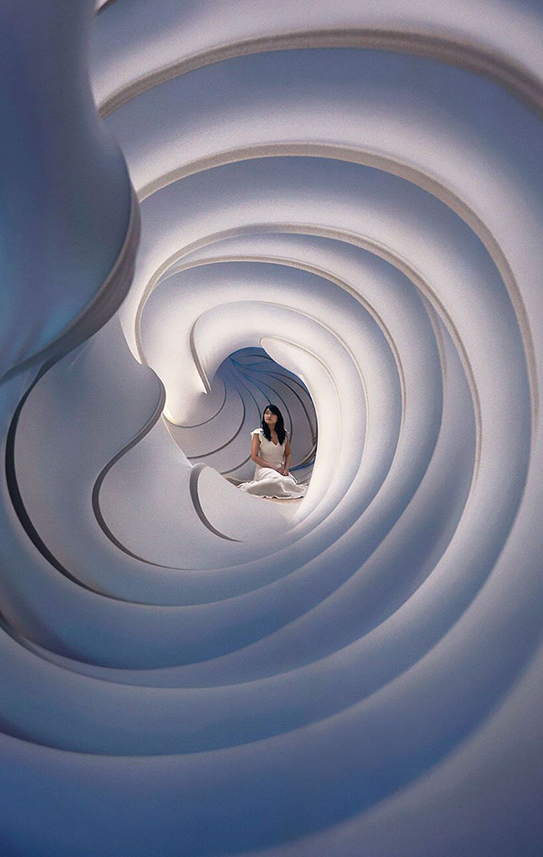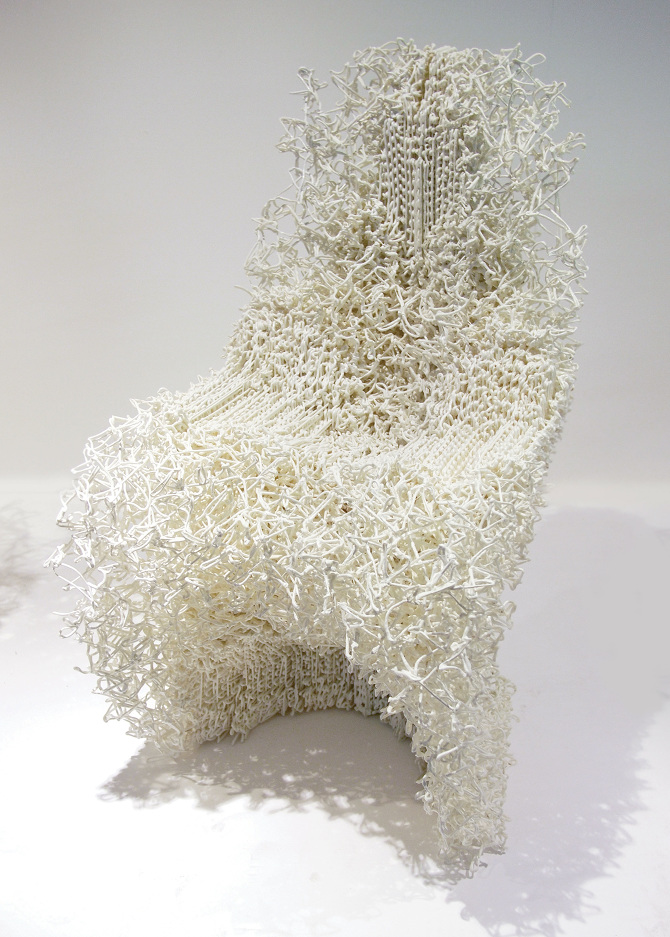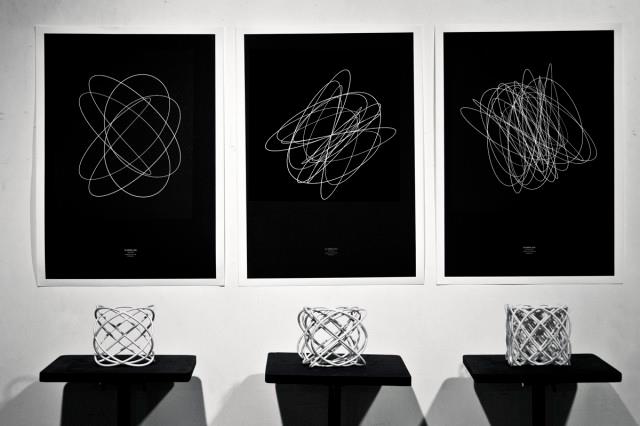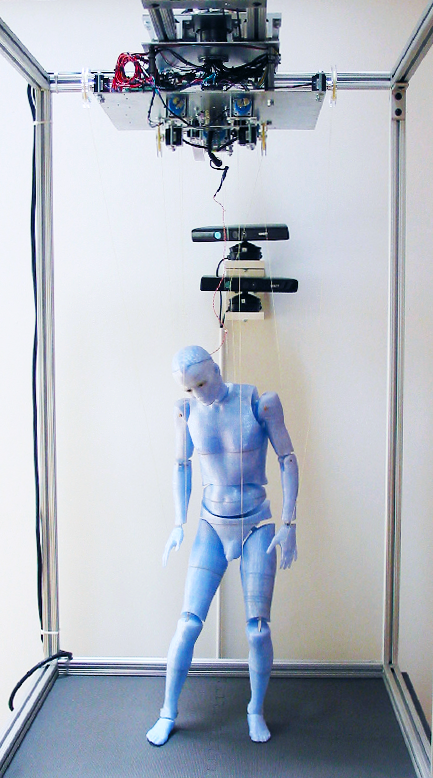
Lilla LoCurto & Bill Outcault
The willful marionette
the willful marionette (2014) was created by artists Lilla LoCurto and Bill Outcault during a residency with the University of North Carolina Charlotte, working with the College of Computing and Informatics as well as the College of Art and Architecture. The marionette is 3d printed from the scanned image of a human figure and responds engagingly in real time to spontaneous human gestures by reading a viewer’s movements and expressions. Its strings are manipulated by motors and software and there are two depth sensors that read and analyze the behaviors and gestures of participants. The puppet’s subsequent actions are designed to elicit further responses, creating an exchange focusing on the frailty and insecurities of the human participant and raising issues of contemporary relevance. The intention of the project was not to create so much a perfectly functioning robot but rather to imbue an obviously mechanically actuated marionette with the ability to solicit a physical and emotional dialog with a viewer.

